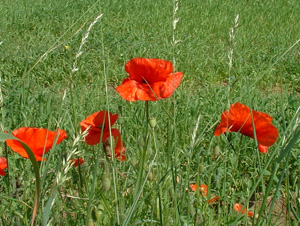Wildlife gardening - Hoverflies

Hoverflies are another gardenerís friend and something every wildlife gardener should try to attract. They help to keep pest numbers down. They live in many different habitats, with woodland edge settings being a big favourite, but in summer they are found in most gardens that have plenty of suitable flowers growing. Some types of hoverflies breed and live around water, so installing a fish-free pond will provide another habitat for them.
Grow open, simples flowers for hoverflies
Hoverflies feed on plants where they can get to the nectar and pollen easily, so growing plants that have flat heads of flowers, like Sedums, Achillea, Scabious, poppies and elder, will help them to flourish.
Hoverflies don't sting
There are 266 different types in Britain and although they look rather like bees or wasps, they are not at all harmful to humans because they have no sting.
Hoverfly larvae eat many aphids - up to 50 a day - and the adults eat nectar and pollen, which pollinates many flowers. In turn, the flowers then produce fruit and seed to feed other creatures.

Summer field poppies
Strange fact about hoverflies
If you look carefully, you can tell whether a hoverfly is male or female by looking at its eyes. With male hoverflies, the eyes are joined in the middle, like big, black goggles. In the female, the eyes are separate and look more like sunglasses.

Female hoverfly

Male hoverfly

© Copyright Miranda Hodgson 2007